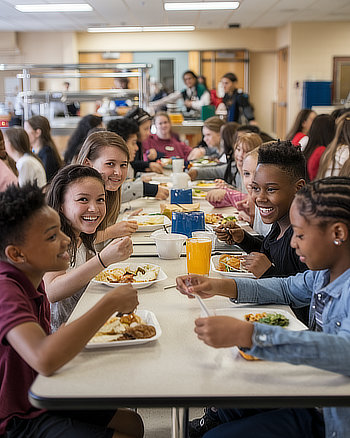Why the Lunch Intervention Program?
School lunch periods can be particularly stressful for vulnerable students of all ages due to the unstructured nature of this break. Without the guidance and structure of a classroom setting, social hierarchies, peer dynamics, and other challenges often come to the forefront, exacerbating feelings of anxiety, exclusion, or fear.
By recognizing lunchtime as a stress point, our Lunch Intervention Program (LIP) can transform this period into a time of connection, support, and empowerment by providing vulnerable students a quiet, safe, non-judgmental environment.
There are many reasons why lunch periods can be problematic. They include: 
- Lack of supervised structure
- Social pressures
- Bullying and harassment
- Fear of judgment
- Triggers from trauma or abuse
- Conflict without resolution
- Missed opportunities for connection
LIP Methodology
There is no one method for resolving the problem. LIP, combined with support from school staff, uses a variety of modalities, such as:
- Safe spaces
- Restorative practice
- Creative expression
- Peer support, including training student leaders to be Peer Advocates
- Skill building
What LIP Does
There are many positive outcomes from the LIP program. Here are a few:
- Increased Classroom Time and Engagement
- Improved Learning, Grades, and Concentration
- Reduced behavioral issues during lunch periods
- Reduced Truancy
- Reduction in In-School and Out-of-School Suspensions
In-school suspension
At some schools, lunchtime is used for in-school suspension periods. These periods can often be combined with the LIP program to benefit both groups.
